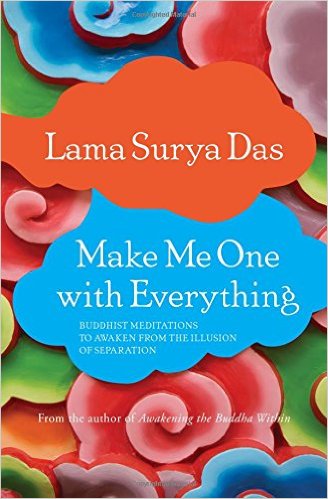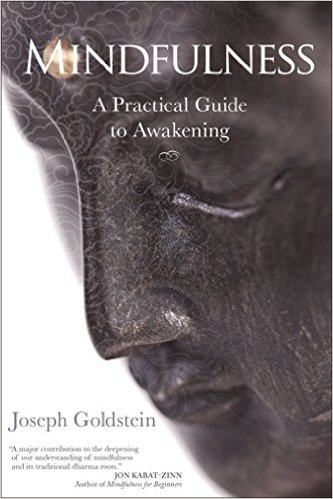
We hear quite a bit about being in the moment these days.
Celebrities and CEOs have spoken out about how adopting the practice, has improved their career and personal life. You may have already adopted various techniques and have had varying degrees of success. One place that many of us neglect to apply the practice is where we often need it most, at work. Today we are going to talk about some techniques everyone can use on the clock to stay calm, present, and focus on your workplace tasks.
Celebrities and CEOs have spoken out about how adopting the practice, has improved their career and personal life. You may have already adopted various techniques and have had varying degrees of success. One place that many of us neglect to apply the practice is where we often need it most, at work. Today we are going to talk about some techniques everyone can use on the clock to stay calm, present, and focus on your workplace tasks.
”Mindfulness practice begins to open everything up” – Joseph Goldstein
How many times have you started the business day with a clear agenda and tasks ready to tackle? But before you realize it, that focus and energy fall by the wayside and stress slowly builds. You are inundated with workplace distractions and fires to put out one by one until you look up at the clock, and the day is over. Some important things got done but not all was accomplished. There is more work on your plate than when you started, and you have a hard time even remembering all the things that happened that day.
If this sounds familiar, don’t sweat it, you’re not alone. Getting distracted and overwhelmed is a side-effect of being human. But we have tools and techniques available that aid us in getting past these impediments and settle into the experience that is life. To accomplish this, we must also understand the link between our body and mind. Actively be aware of how the two work in balance and how we can use them in our favor. This practice allows us to be present and focused more naturally and more often, especially in the workplace.
”When you are fully in the moment, this moment is all there is.”- Ram Dass
It is important first to clarify what we are talking about when we use the term mindfulness. The practice has evolved and been adopted by so many religions and secular philosophies over the centuries. We all may have a different idea of the details of how mindfulness works or should be practiced. The core of the practice we are all talking about, though, is cultivating this ability to shift our attention to the present moment, without our usual filters and judgments.
Beyond its bringing our awareness to the moment, the practice of mindfulness most directly correlates to the reduction of stress. We know from research and experience that stress has a direct effect on our mental and emotional function, impacting how we manage our lives at home and at the workplace. From depression to heart disease, stress presents a danger beyond our day to day moments of discomfort and anxiety. When we know when to apply the techniques of mindfulness correctly, we can directly reduce the impact of stress.
“Thoughts should not be treated as obstacles or hindrances. They are just another object of mindfulness, another object of meditation. Don’t let the mind become lazy and drift along. Make the effort for a great deal of clarity with respect to what’s happening in this moment.”- Ram Dass
Stress attempts to seep in from the moment you wake up. Studies show that our bodies begin to increase production of stress hormones (namely cortisol) by 70% in the first 30 minutes of waking. A great way to reduce this is by spending your first several minutes in bed focusing on your breath. Notice how thoughts of the day ahead trickle in and let them go as they come in.
As you get up to begin the day be aware of your transitions. Did you just spend 45 minutes in traffic or almost get knocked off you bike on the ride to work? Spend a few minutes in your car, watching your breath. If you meditate, meditate, if you chant or sing, do that. Whatever clears your mind and brings you into the moment. This allows for softer transitions and keeps your baseline stress level low all day for easier maintenance when pressure builds. Click here for a short guided meditation with Sharon Salzberg that you can easily do at your workplace.
Throughout the day as you try and focus your attention on the task at hand, you will notice an infinite array of thoughts and distractions float into your mind. Take notice of them and let them go. It’s when we allow our focus stray and attach to these thoughts that everything starts to go wrong. The goal is to let them pass through and when it is the right time, then address them. Before you walk into a meeting, take three minutes to clear your mind and bring it into the moment where it does it’s job best.
“When we can drop into that place of mindfulness, which is a place of acceptance non-resistance non-grasping, then it is a great relaxation.”- Joseph Goldstein
As the day progresses set alarms for yourself to force breaks into your day. Stop and practice a minute of mindfulness to give your mind a break. You will notice mental fatigue easing and focus restoring. If you have to opportunity, leave your workplace to stretch your legs and take a silent walk. Taking moments like this prevents your body from going into auto-pilot. It helps avoid poor decision making and mitigate having to compensate with bad habits.
When the work day comes to an end there is one more useful opportunity to practice mindfulness that sets up a perfect transition into your evening. Once you’ve left your workplace behind, for the last ten or fifteen minutes of your commute, turn everything off and just be. Sit with your breath and appreciate the moment you have to yourself. Wave to pedestrians, appreciate the sun hanging on the horizon. When you are done doing this, take notice of how you feel and appreciate the sum total of your mindfulness practice. You should be less stressed, clear of mind, and more energized than ever.
Cultivating mindfulness, like any discipline, doesn’t come quickly or easily at first. But with practice, you will see results start to appear. No one source will give you all the tools you need or provide an approach that works for you, here are some suggestions for more on cultivating mindfulness. One of the most highly recommended books on the practical application of mindfulness is Mindfulness: A Practical Guide to Awakening by Joseph Goldstein. For a deeper dive into the Tibetan Buddhist approach to mindfulness, “Make me One With Everything” by Lama Surya Das. There are also many great podcast episodes on the subject of mindfulness here on the Be Here Now Network. Be sure to check out this insightful conversation with Raghu Markus and Rameshwar Das and a great talk with Jack Kornfield.
By Corey Leonard, on behalf of Be Here Now Network
Amazon Recommendations





